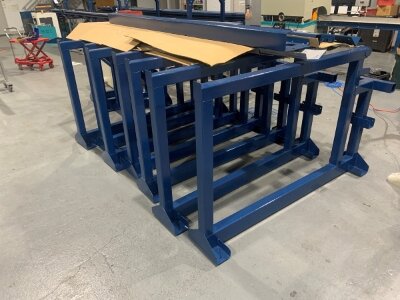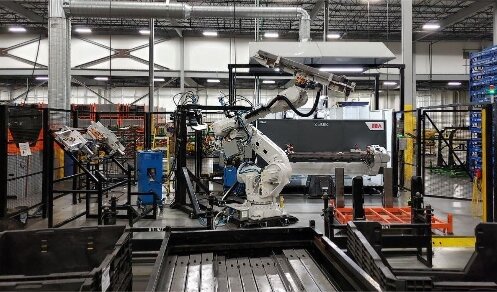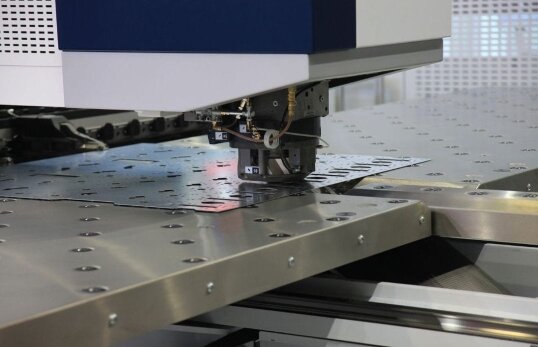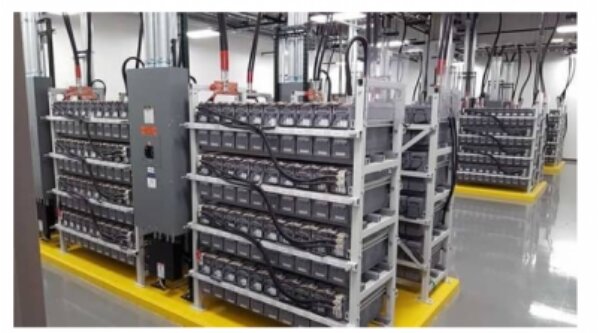Every manufacturer faces the challenge of choosing the right metal fabrication process. Time constraints, budget limitations, and quality requirements often create a perfect pressure storm. Sheet metal punching offers a solution that balances speed, precision, and cost-effectiveness for many industrial applications.
Let me break down the key aspects of sheet metal punching that distinguish it from other fabrication methods. We’ll explore its unique advantages, common applications, and comparisons to alternative processes.
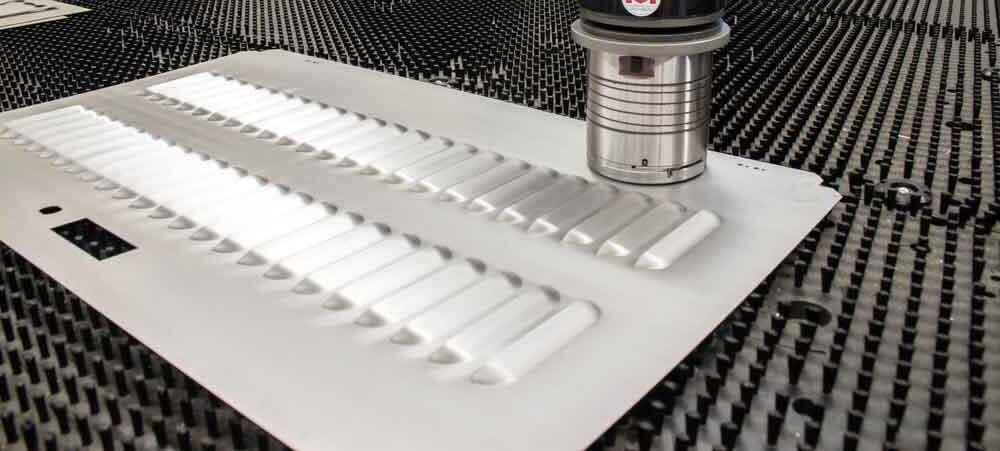
What is Sheet Metal Punching?
Sheet metal punching transforms flat metal sheets into functional components. This process uses specialized tools called punches and dies to create precise holes and forms in metal sheets.
During the punching process, a punch tool moves downward with significant force to penetrate the metal sheet. The die below the sheet supports the material and allows the punch to create clean cuts.
The punched-out material, the slug, falls through the die while the finished workpiece remains on the working surface. This creates exact openings that match the shape of the punch tool.
Key Terminology in Sheet Metal Punching
Several technical terms define the punching process:
- Punch and Die: The main tools that work together to create holes. The punch pushes through the material while the die supports it from below.
- Stroke: The punch moves completely up and down during the operation.
- Tonnage: The force needed to punch through the material, measured in tons.
- Clearance: The space between the punch and die that affects cut quality.
- Stations: Different tool positions in a turret punch press hold various punch shapes.
Step-by-Step Process of Sheet Metal Punching
The sheet metal punching process systematically involves several key steps to ensure precision and efficiency. Here’s a detailed breakdown of the process:
- Loading the Sheet Metal: Begin by carefully positioning and aligning the sheet metal on the punch press. Securing the sheet in place is essential to prevent any movement during the punching operation.
- Setting Up the Punch Press: Configure the punch press with the appropriate punches and dies based on the desired hole size and shape.
- Aligning the Tooling: Accurately align the punch and die to ensure precise punching.
- Adjusting Variables: Adjust variables such as punching force, clearance, and speed according to the material thickness and desired outcome.
- Initiating the Punching Operation: Once all preparations are complete, activate the punch press. The ram applies force, causing the punch to penetrate the sheet metal, creating the intended holes or shapes.
- Repeating the Process: Reposition and align the sheet metal as needed for multiple features.
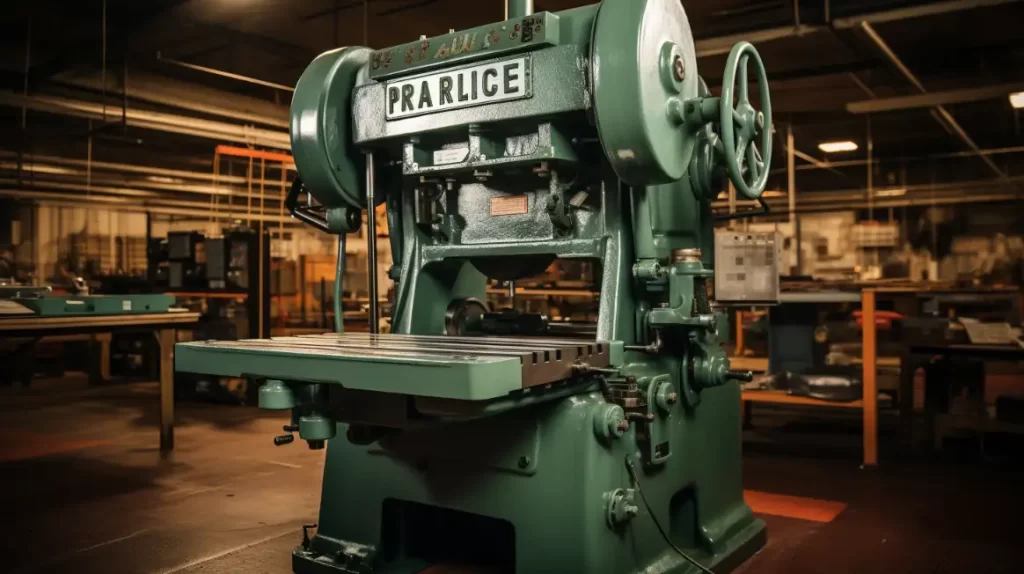
Types of Punching Machines and Tools
Sheet metal fabrication demands specific tools for specific jobs. Each type of punching machine brings unique capabilities to meet different production needs.
Hydraulic Punching Machines
Hydraulic punching machines utilize hydraulic power to generate the force needed for punching operations. They are known for their ability to handle thick materials and provide high precision.
Mechanical Punching Machines
Mechanical punching machines operate using power sources like flywheels or crankshafts. They generate the necessary force through kinetic energy, making them effective for various punching tasks.
Pneumatic Punching Machines
Pneumatic punching machines use compressed air to generate the force required for punching operations. They are particularly useful for smaller-scale operations or in environments where cleanliness is essential, such as textiles or food processing.
Materials Used in Sheet Metal Punching
The choice of materials in sheet metal punching significantly influences the process’s efficiency and the quality of the final product. Here are some commonly used materials in sheet metal punching:
- Stainless Steel
- Aluminum
- Mild Steel
- Copper
- Titanium
Choosing Tooling For Sheet Metal Punching
The right tooling for sheet metal punching is essential for quality results and efficient production. Here are key factors to consider:
The Thickness of the Material
The thickness of the sheet metal affects your tooling choice. Ensure the tooling can handle the specific thickness without damaging the tool or the material.
Cost Considerations
Stay within your budget while ensuring efficiency and durability. Cheaper options may seem attractive, but high-quality tooling often offers better long-term savings.
Easy Maintenance
Opt for tooling that is easy to maintain and clean. Regular maintenance is crucial for extending the lifespan of your tools.
Compatibility
Ensure that the tooling works effectively with the type of sheet metal used without causing damage. Selecting compatible tools helps avoid production issues and ensures project quality outcomes.
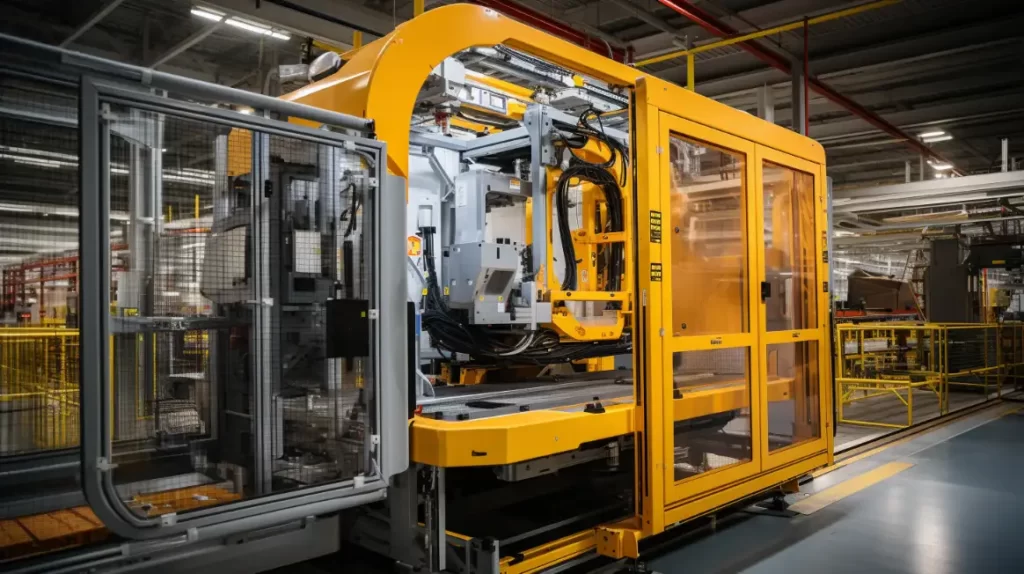
The Different Types of Punching Techniques
Punching techniques are essential in sheet metal fabrication, each serving specific purposes and applications. Here are the main types:
Single Stroke Punching
Single-stroke punching involves a single downward movement of the punch to create a hole or shape in the sheet metal. This technique is efficient for producing individual features quickly.
Continuous Punching
Continuous or chain punching utilizes a rapid series of punches in quick succession. This method is ideal for high-volume production where multiple holes or shapes are needed in a single cycle.
Pilot Hole Punching
Pilot hole punching creates starter holes in sheet metal before further processing. This method ensures accurate alignment for subsequent operations, such as drilling or larger hole punching.
Coining Punching
Coining punching is a specialized technique that uses high tonnage to create precise shapes and bends in sheet metal. In this process, the punch penetrates the material, allowing it to flow into the die, resulting in highly accurate features with minimal spring back.
Advantages and Disadvantages of Sheet Metal Punching
Sheet metal punching is a widely used manufacturing process with distinct advantages and disadvantages. Understanding these can help determine if this method suits your project.
Advantages
- Cost-Effective: Punching is generally less expensive than methods like laser cutting, especially for high-volume production runs.
- High Efficiency: The process allows for rapid production, creating multiple holes or shapes in a single operation.
- Precision and Consistency: Modern punching tools offer excellent precision, ensuring that parts are produced with tight tolerances.
- Minimal Material Waste: Punching maximizes material utilization, allowing manufacturers to generate more products from a single metal sheet.
- Versatility: Punching can create a variety of features and can be integrated with other processes.
Disadvantages
- Setup Time and Costs: The initial setup of the punch can be very time-consuming and costly.
- Limited Complexity: More complex geometries often require additional processes or custom tooling, which can increase costs and lead times.
- Potential for Material Distortion: The force applied during punching can distort thinner or delicate materials.
- Tool Wear: Punching tools can wear out over time, leading to decreased accuracy and increased maintenance needs.
Applications of Sheet Metal Punching
Sheet metal punching is a vital process with diverse applications across multiple industries. Here are some uses for sheet metal punching:
Industrial Applications
- Production of machine frames, enclosures, and complex parts for machinery.
- Creation of functional components such as brackets, panels, and fittings.
- Manufacturing of equipment parts that require high precision and durability.
Automotive Manufacturing
- Fabrication of body panels, engine covers, and structural components.
- Production of brackets and reinforcements essential for vehicle assembly.
- Creation of interior parts like dashboards and trim pieces that enhance functionality and aesthetics.
Electronics and Electrical Enclosures
- Manufacturing of enclosures for computers, servers, and consumer electronics.
- Production of brackets and connectors that secure delicate components.
- Creation of faceplates and control panels that meet strict design specifications.
- Design and fabrication of PCBs for electronic control systems and components.
Aerospace Components
- Fabrication of wing skins, fuselage panels, and engine components that require tight tolerances.
- Production of cockpit instrumentation housings and landing gear components.
- Manufacturing lightweight yet strong parts is essential for aircraft performance and safety.
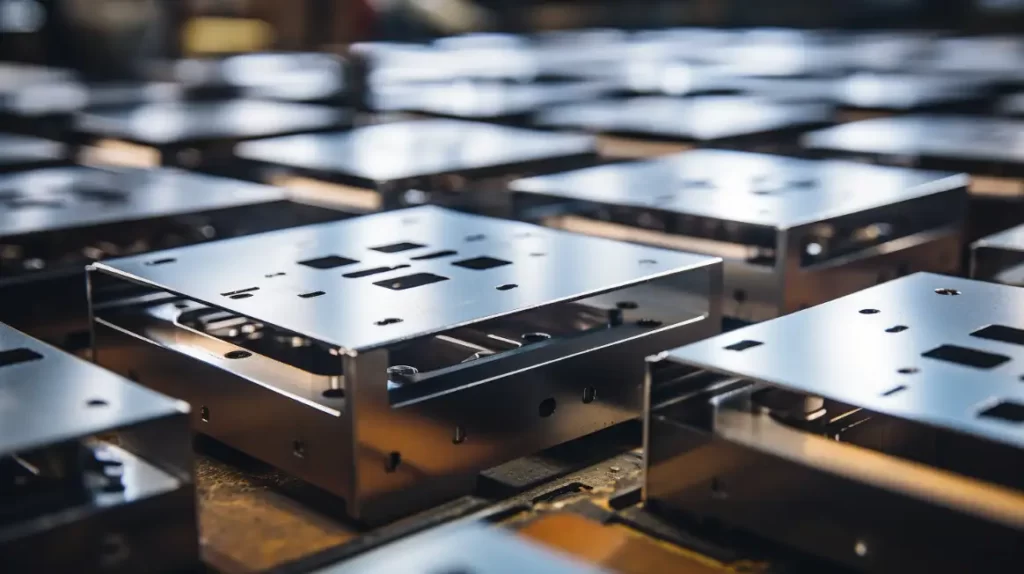
Sheet Metal Punching Vs Sheet Metal Blanking
Sheet metal punching and blanking are both essential processes in metal fabrication, but they serve different purposes and produce distinct outcomes. Understanding these differences can help manufacturers choose the right method for their needs.
Definition
- Sheet Metal Punching: This process involves using a punch press to create holes or shapes in sheet metal. The punch removes material, resulting in scrap, while the remaining piece is the desired product.
- Sheet Metal Blanking: Blanking is a cutting operation where a specific shape is cut out from a larger metal sheet. In this case, the cut-out piece is the final product, and the remaining material is considered scrap.
Key Differences
| Feature | Sheet Metal Punching | Sheet Metal Blanking |
|---|---|---|
| Purpose | To create holes or shapes in a workpiece | To cut out specific shapes from a sheet |
| End Product | Remaining piece after removing scrap | Cut-out piece is the final product |
| Material Removed | Scrap material is removed | The cut-out shape is retained |
| Applications | Used for making holes in various components | Used for producing parts like brackets and panels |
| Precision | High precision for holes and features | High precision for complex shapes |
Conclusion
Sheet metal punching is a versatile and efficient process widely used across various industries, including automotive, aerospace, electronics, and industrial applications. Its ability to create precise holes and features makes it essential for manufacturing high-quality components.
If you’re interested in exploring sheet metal punching solutions for your projects or have any questions, feel free to contact us for expert guidance and support!
Hey, I'm Kevin Lee

For the past 10 years, I’ve been immersed in various forms of sheet metal fabrication, sharing cool insights here from my experiences across diverse workshops.
Get in touch

Kevin Lee
I have over ten years of professional experience in sheet metal fabrication, specializing in laser cutting, bending, welding, and surface treatment techniques. As the Technical Director at Shengen, I am committed to solving complex manufacturing challenges and driving innovation and quality in each project.

